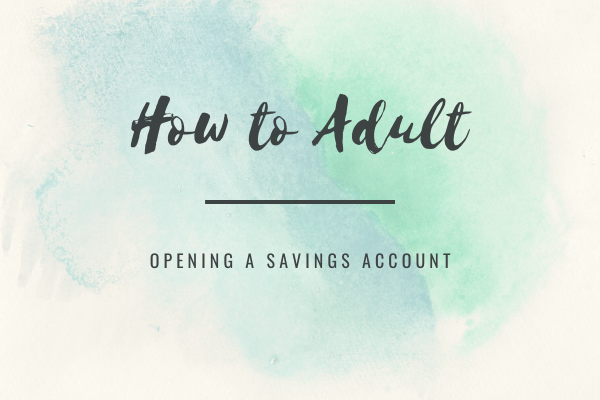
How to Adult: Opening a Savings Account
Learning to save money is a vital skill and starting early is a gift that keeps giving well into adulthood. A savings account is a basic type of bank account that allows you to deposit money, keep it safe, and withdraw funds, all while earning interest. When saved money earns interest in your account, the bank will make small additions to what is being held in savings, typically once a month.
Explore your Options
- A 529 College Savings Plan; 529 savings plans are flexible, tax-advantaged accounts designed specifically for education savings. This kind of account has no state taxes with minimal fees and expenses to pay. While there is no minimum balance to hold in this account, the bank will only accept deposits until the balance of the account reaches $370,000. Tax-free withdrawals from 529 plans are limited to $10,000 in tuition expenses for K-12 schools.
- A Coverdell Education Savings Account; This account is very similar to a 529 plan with tax-free investments and tax-free withdrawals for education purposes. This account covers more purchases for K-12 than a 529 plan. Coverdell ESAs also have much lower maximum contribution limits per child, and they are only available to families below a specified income level.
- Uniform Gifts to Minors Act (UGMA) or Uniform Transfers to Minors Act (UTMA); Both UGMA and UTMA accounts are custodial accounts invested in the child’s name. These accounts can be used for any expense for the benefit of the child, not limited to educational needs. While this may sound appealing, both accounts do have a required minimum balance, while the previously mentioned accounts do not require a certain amount to be held.
- A General Savings Account; This account is the most well known, and most often used account for both minors and adults. The money in a general savings account can be taxed by the state, and while many have a required minimum balance, there is no limit on how much money to be held in the account.
Opening a Savings Account
Most banks won’t allow minors to open accounts online, so you may need to visit a bank branch. Those over the age of 18 can open a savings account online or through the bank’s mobile app. Compare banks by reviewing interest rates, fees, and minimum balance requirements. Get an account that’s easy to use, whether that means the branch is conveniently located or that the mobile app makes sense.
Gather the information needed to open an account: government-issued identification (a driver’s license number, military ID, or other ID), your Social Security number, and a mailing address. Open an account online or in-person by submitting an application and fund the account with an initial deposit if required. Usually, to open an account, at least one account holder needs to be 18 years old or older, usually a parent or guardian. Accounts generally have minimum balances required to maintain. Any fees mentioned in the terms of service will be withdrawn from the savings account, so there is a possibility you could be charged overdraft fees if the account balance goes below zero.
Interest Rate
Many savings accounts will accumulate interest over time. This is a small amount of money the bank will add to your account after the money has been held for however long (stated in the terms of the account). Check with the bank to find out interest rates and terms of interest.
Managing Funds
A traditional way to make deposits is to bring cash or checks to a bank or credit union branch. You can also make deposits at some ATMs, allowing cash to be deposited outside of banking hours or at a location that’s more convenient. When a deposit is made, just put the savings account number on the deposit slip. With most banks, it’s also possible to deposit checks with your mobile device. Moving money from checking to savings within the same bank is easy and often instant. Just use the bank’s app, website, or customer service line to make the move. This is often necessary if you have a job; usually, paychecks will be directly deposited into a checking account. If you want physical cash, withdraw money from an ATM. Moving money to a checking account in the same bank is fast and easy. Just contact customer service or make the transfer using the bank’s app or website. In some situations, it might be easiest to have the bank print a check using funds from the savings account. For example, when making a down payment on a car, the bank can create a cashier’s check payable to a title company or seller.
Resources:
https://www.fidelity.com/life-events/saving-for-college/compare-plans